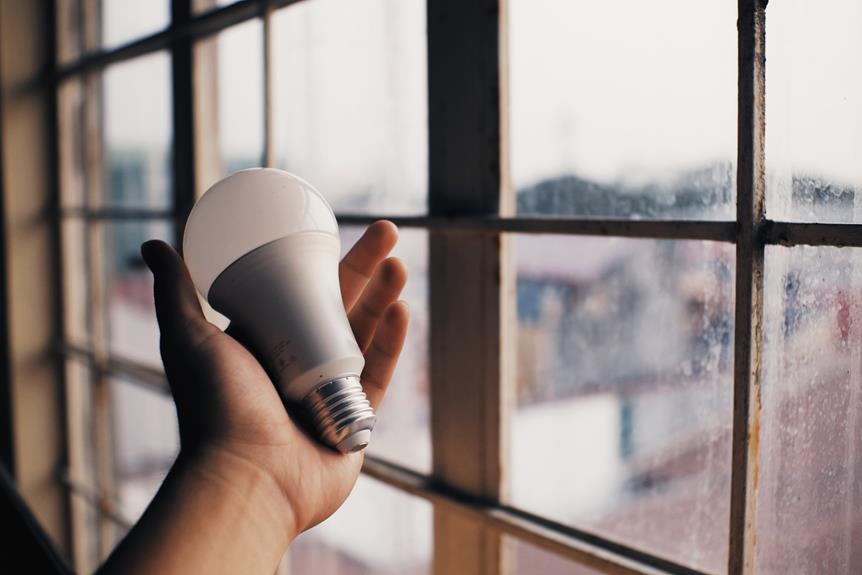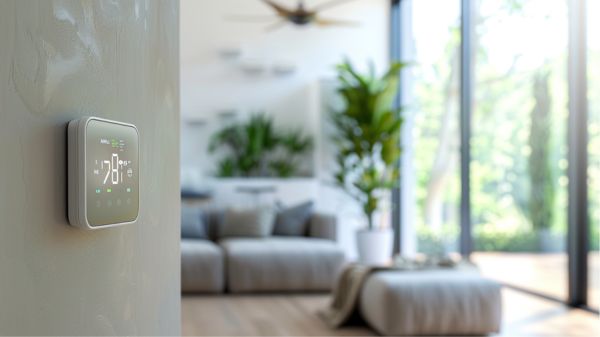Looking for ways to make your home more energy efficient? We’ve got you covered. In this article, we’ll share three effective tips to boost home energy efficiency that will not only save you money, but also reduce your carbon footprint.
From insulating walls and ceilings to upgrading appliances, we’ll show you how to take action and make a positive impact on the environment. Get ready to transform your home into an energy-efficient oasis that you and your family can be proud of.
Insulate Walls and Ceilings
One of the most effective ways to boost home energy efficiency is by insulating our walls and ceilings. Insulation techniques help to create a barrier that prevents air from escaping or entering our homes, reducing the need for heating or cooling. This not only saves energy but also lowers our utility bills.
There are several energy-saving practices when it comes to insulating walls and ceilings. Firstly, we can use insulation materials such as fiberglass, cellulose, or foam to fill the gaps and spaces in our walls. Secondly, we can install insulation batts or rolls in the attic or crawlspaces to prevent heat loss.
Lastly, sealing any cracks or openings with caulk or weatherstripping can further improve the efficiency of our insulation.
Seal Air Leaks
To boost home energy efficiency, we can start by sealing air leaks throughout our house. Air leaks can lead to significant energy loss, causing our heating and cooling systems to work harder and increasing our energy bills.
Fortunately, there are several effective air sealing techniques we can use to tackle this issue. One DIY air sealing method is to identify and seal gaps around windows and doors using weatherstripping or caulk.
Another technique is to seal gaps around electrical outlets and switches with foam gaskets. Additionally, we can use expanding foam to seal larger gaps around pipes, vents, and outlets.
Upgrade to Energy-Efficient Appliances
Now let’s explore how upgrading to energy-efficient appliances can further boost home energy efficiency. Here are four ways upgrading to energy-efficient appliances such as energy-efficient refrigerators and energy-saving washing machines can benefit us:
- Lower energy consumption: Energy-efficient appliances use less electricity, resulting in reduced energy consumption and lower utility bills.
- Environmental impact: By using energy-efficient appliances, we can reduce our carbon footprint and contribute to a healthier environment.
- Long-term cost savings: Although energy-efficient appliances may have a higher upfront cost, their energy-saving features can lead to significant long-term cost savings.
- Enhanced performance: Energy-efficient appliances are designed to deliver optimal performance while using less energy, ensuring that we can enjoy the same functionality and convenience without compromising efficiency.
Install Programmable Thermostats
Let’s talk about the benefits of installing programmable thermostats in your home. By setting cost-saving temperature settings, you can optimize your heating and cooling system to run more efficiently. This not only helps to reduce energy consumption, but also saves you money on your utility bills.
Cost-Saving Temperature Settings
We can significantly improve our home energy efficiency by installing programmable thermostats, which allow us to set cost-saving temperature settings. Here are four actions we can take to maximize our energy savings:
- Set a schedule: Program the thermostat to lower the temperature when we’re away from home or sleeping, and raise it when we’re active and need more comfort.
- Take advantage of setbacks: Use the thermostat’s setback feature to automatically adjust the temperature during times when we’re typically not at home, such as during work hours or vacations.
- Use zoning: If our home has multiple zones, program each thermostat separately to optimize comfort and energy usage in each area.
- Integrate with other energy-saving measures: Combine the use of programmable thermostats with energy-saving window treatments and weather stripping installation for maximum efficiency.
Optimizing Heating and Cooling
Installing programmable thermostats is an effective way to optimize heating and cooling in our homes. Smart thermostats allow us to set different temperatures for different times of the day, ensuring that our homes are comfortable when we’re there and saving energy when we’re not.
By programming our thermostats to lower the temperature at night or when we’re away, we can reduce our energy consumption and lower our utility bills.
Additionally, we can enhance the energy efficiency of our heating and cooling systems by using energy-saving curtains. These curtains are designed to insulate our windows, preventing heat transfer and keeping our homes cooler in the summer and warmer in the winter.
Use Natural Lighting and Efficient Light Bulbs
By incorporating natural lighting and using efficient light bulbs, we can significantly improve our home’s energy efficiency. Here are four tips to help you make the most of natural lighting and choose the right light bulbs:
Maximize natural lighting:
- Open curtains and blinds during the day to let sunlight in.
- Rearrange furniture to ensure that natural light reaches all areas of your home.
- Not only does this reduce the need for artificial lighting, but it also creates a warm and inviting atmosphere.
Choose LED bulbs:
- LED bulbs are the most energy-efficient option available.
- They use up to 80% less energy than traditional incandescent bulbs and can last up to 25 times longer.
- Consider replacing your old bulbs with LED ones to save on energy costs.
Opt for daylight bulbs:
- Daylight bulbs mimic natural light and provide a bright, white light.
- They’re ideal for areas where natural lighting is limited, such as basements or windowless rooms.
- Daylight bulbs can create a more vibrant and natural lighting experience.
Use motion sensor lights:
- Installing motion sensor lights in rooms and outdoor areas can help reduce energy wastage.
- These lights automatically turn on when someone enters the room and turn off when there’s no movement.
- This ensures that lights are only used when needed.
Optimize Heating and Cooling Systems
Let’s talk about optimizing our heating and cooling systems for maximum energy efficiency.
One effective way to do this is by programming our thermostats to adjust temperatures based on our schedules, so we’re not wasting energy when we’re not home.
Regular HVAC maintenance is also crucial in ensuring that our systems are running efficiently and not consuming more energy than necessary.
Thermostat Programming for Efficiency
We can maximize the efficiency of our heating and cooling systems by properly programming our thermostat. To ensure our thermostat is working optimally, regular thermostat maintenance is necessary. Here are four key steps to program our thermostat for efficiency:
- Set a temperature schedule: Create an energy-saving schedule that aligns with our daily routines. Lower the temperature during times when we’re away or asleep, and raise it when we’re active and at home.
- Utilize setback temperatures: Take advantage of setback temperatures, which allow our heating and cooling systems to use less energy when we’re not at home. By setting a setback temperature, we can save energy and money.
- Use programmable features: Many thermostats offer programmable features that allow us to set different temperatures for different times of the day. Take advantage of these features to optimize our home’s energy efficiency.
- Consider smart thermostats: Smart thermostats can learn our preferences and adjust accordingly, saving energy without sacrificing comfort. They also offer remote control options, allowing us to adjust the temperature even when we’re away from home.
Regular HVAC Maintenance
To optimize the efficiency of our heating and cooling systems, regular HVAC maintenance is essential. By following an HVAC maintenance checklist, we can ensure that our systems are running smoothly and efficiently, saving energy and reducing our utility bills. Here are some energy-saving tips to keep in mind when it comes to HVAC maintenance:
- Clean or replace air filters regularly: Dirty filters restrict airflow, making your HVAC system work harder and use more energy. Clean or replace filters every one to three months, depending on usage.
- Schedule regular professional maintenance: A professional HVAC technician can inspect and tune up your system to ensure it’s running efficiently. They can also identify and fix any potential issues before they become major problems.
- Keep the outdoor unit clean and clear: Remove any debris or vegetation around the outdoor unit to ensure proper airflow and prevent the system from overheating.
Implement Smart Home Technology
One key step to boost home energy efficiency is by implementing smart home technology. By utilizing smart home automation and energy consumption monitoring, you can effectively manage and reduce your energy usage.
Here are four ways smart home technology can help improve energy efficiency:
- Smart Thermostats: These devices allow you to control and schedule your heating and cooling systems remotely. By optimizing temperature settings based on occupancy and weather conditions, you can reduce energy waste.
- Smart Lighting: With smart lighting systems, you can automate lighting schedules, adjust brightness levels, and even turn off lights when not in use. This helps minimize unnecessary energy consumption.
- Smart Power Strips: These power strips can detect when devices are in standby mode and automatically cut power to them. This eliminates ‘vampire’ energy usage and reduces wasted electricity.
- Energy Monitoring Systems: By tracking your energy consumption in real-time, you can identify areas of high usage and make necessary adjustments to conserve energy.
Implementing smart home technology provides you with greater control over your energy usage, resulting in a more efficient and sustainable home.
Educate and Involve Family Members
Getting everyone in the family on board with energy-saving habits is crucial for boosting home energy efficiency. By educating and involving family members, you can create a sense of belonging and shared responsibility towards saving energy.
Start by explaining the importance of energy conservation and how it can positively impact the environment and save money on utility bills. Encourage family members to make simple changes like turning off lights when not in use, using energy-efficient appliances, and adjusting the thermostat when no one is home.
Create a checklist or chart to track energy-saving habits and involve everyone in setting goals and rewards for achieving them. Regularly discuss and celebrate progress to keep the family engaged and motivated.
With everyone’s participation, your home can become more energy-efficient and environmentally friendly.
Conclusion
By implementing these three effective tips, we can transform our homes into energy-efficient havens.
Insulating walls and ceilings and sealing air leaks are important steps in improving energy efficiency. These measures help to keep the home at a comfortable temperature, reducing the need for excessive heating or cooling. This not only saves us money but also reduces our carbon footprint.
Upgrading to energy-efficient appliances is another key aspect of creating an eco-friendly home. Energy-efficient appliances use less electricity, which not only helps to lower our energy bills but also contributes to a greener environment.
Imagine a home that’s snugly insulated, free from drafts, and filled with natural lighting from efficient light bulbs. With optimized heating and cooling systems and smart home technology, we can create a comfortable and sustainable living space for our families.
Let’s join hands and make our homes eco-friendly!




